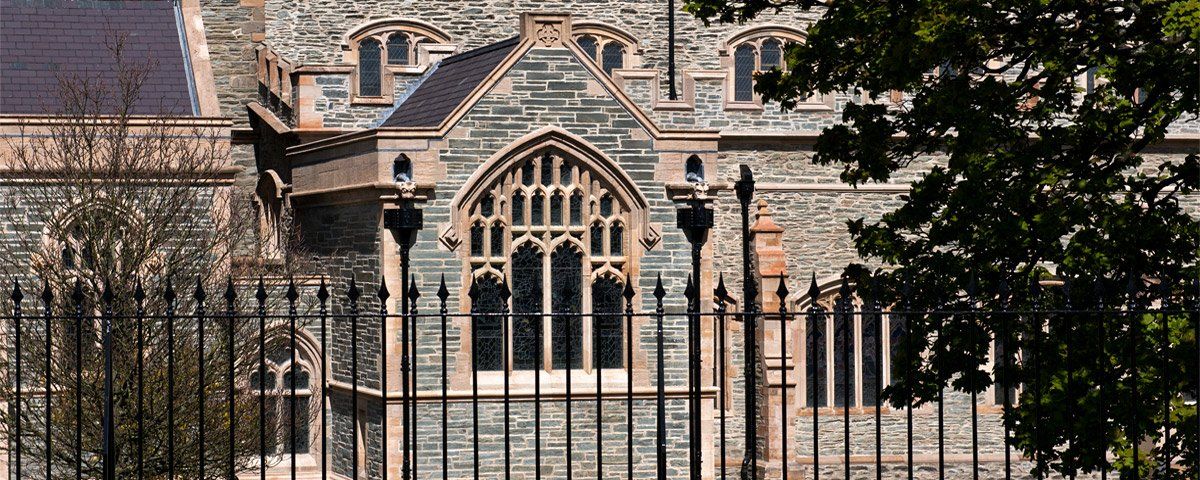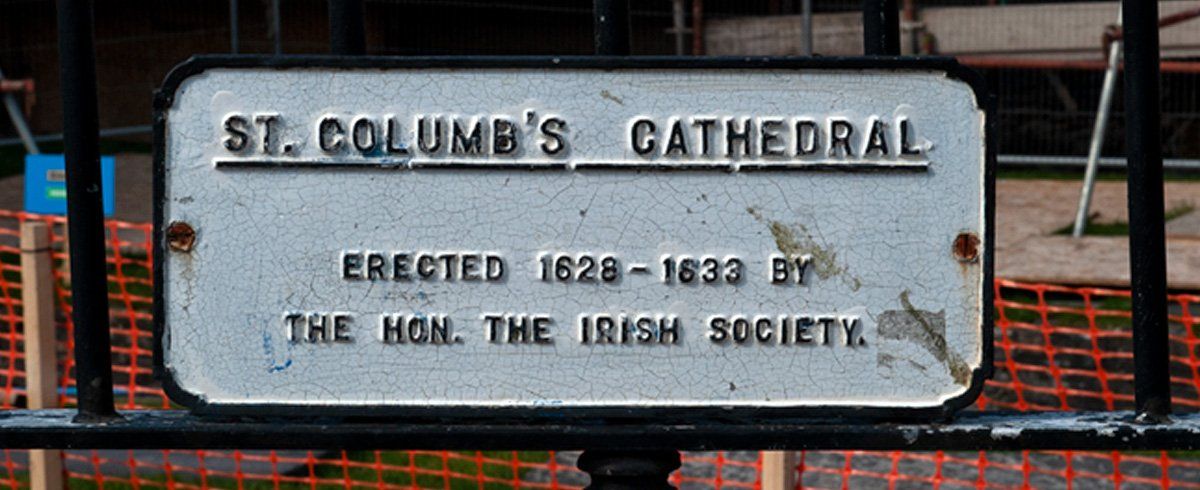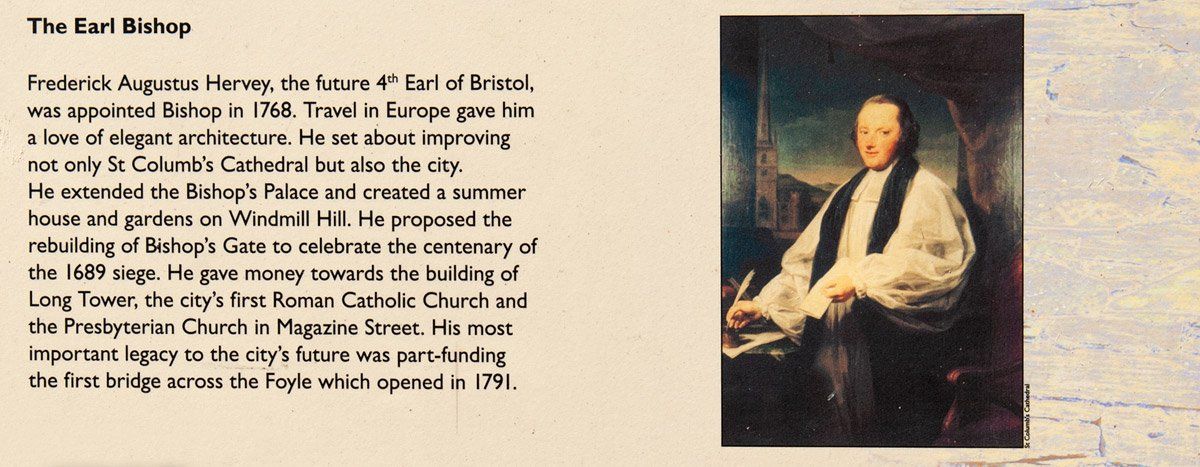St Columba
Columba was born in 521 AD at Gartan in County Donegal, his father Phelim McFergus was related to Niall of the Nine Hostages and his mother a descendant from the King of Leinster. With his family connections, he had influence and a strong following which was demonstrated throughout his life. He was christened Columba ‘Dove’ and became known as Columcille ‘Dove of the Church’, both names are used to refer to him. His early education was at Kilmacrennan, Donegal, then Moville and finally at Clonard Monastery in County Meath where he studied under St. Finian. He was ordained by the Bishop of Clonfad in 546AD when he was 25 years old.
After his ordination he was given land by his cousin Aedh on the banks of the River Foyle where he established his first monastery known as Daire Columcille, this translates to ‘Oak Grove of the Dove of the Church’. Daire became the root of the English word 'Derry' and later 'Londonderry' after the Plantation of Ulster. The original land he built on was called Daire Calgach. (Calgac). Columcille or Columba was responsible for establishing over 50 monastic settlements and churches throughout Ireland. In 563 AD he left Ireland and went to Iona, one of the Scottish Isles. Here he spent his time converting the Picts to Christianity. It is widely believed he left Ireland due to his involvement in the defeat of King Diarmaid at Ben Bulben, Sligo in 561 AD.
The story goes that he was in dispute with St. Finian over a book of psalms (As someone pointed out, this might be the first recorded issue of Irish copyright). Columba had borrowed the book and then hand-copied it to keep for his reference, St. Finian wanted the copy back as he felt he was the rightful owner. The issue was taken before the king for a ruling and he ruled that it should be returned to St. Finian, he quoted ‘ ‘To every cow belongs her calf, therefore to every book belongs its copy’. Columba refused to comply with the king’s ruling and became embroiled in a dispute with both St. Finian and the king. At the same time, Columba had under his protection a son of the king of Connaght who had murdered one of Diarmaid’s soldiers and then fled to the north.
Diarmaid had the Prince taken from Columba's protection and executed for his crime. This incensed both Columba, the northern U Neill's and the King of Connaght. It is believed Columba was instrumental in motivating through his connections and influence a large army which faced king Diarmaid at the Battle of Cul Dreimhne on the slopes of Ben Bulben. This is also referred to as the Battle of the Book, a reference to the dispute with St. Finian. The king’s army was defeated with the loss of three thousand men, and the battle severely weakened the prestige and power base of the king. After the defeat of the king and the large scale of death it brought, Columba felt remorse about what had happened and his role in it.
He sought the wisdom of St Molaise at Inishmurray Island off the coast of Sligo. As a result of this meeting, Columba is said to have exiled himself to Scotland where he was tasked with converting as many Picts to Christianity as had died at the Battle of Cul Dreimhne. He left Ireland with twelve monks and went to the Scottish island of Iona where he founded a monastery which became renown as a centre of learning for early Christianity. It is also widely believed that the illuminated ‘Book of Kells’ was created here. He travelled from Iona to the Scottish mainland to meet the leader of the Picts and during that meeting performed a miracle by opening the gates of their fortress by making the sign of the cross.
This act so impressed the leader that he began to listen to Columba which in turn saw a large number of Picts converting from paganism to Christianity. Columba spent the next twenty years working through the western isles. In 575 AD at the request of the king of Dalriada, he returned to Ireland and went with the king to the great convention of Drumceatt near Limavady (Roe Valley Country Park). This was attended by all the tribe leaders in Ireland along with poets, scholars and Christian leaders. It sorted out issues and forged agreements between the king of Ulster, the northern U Neill's and the king of Dalraida.
At Drumcreatt he is recorded as healing people with water that he had blessed and indeed two sources of local water were named after him from that time. St. Columb’s Well in the Country Park and Columb’s Spring at Coolessan. Columba returned to Iona after the convention and carried on with his Christian work in the Western Isles until he died in 597 AD at the age of 75. He was originally buried on Iona but later exhumed and brought to Ireland. Nobody knows where he was finally buried in Ireland only that he was brought here during the expansion of Viking raids on monasteries and churches in Scotland.







